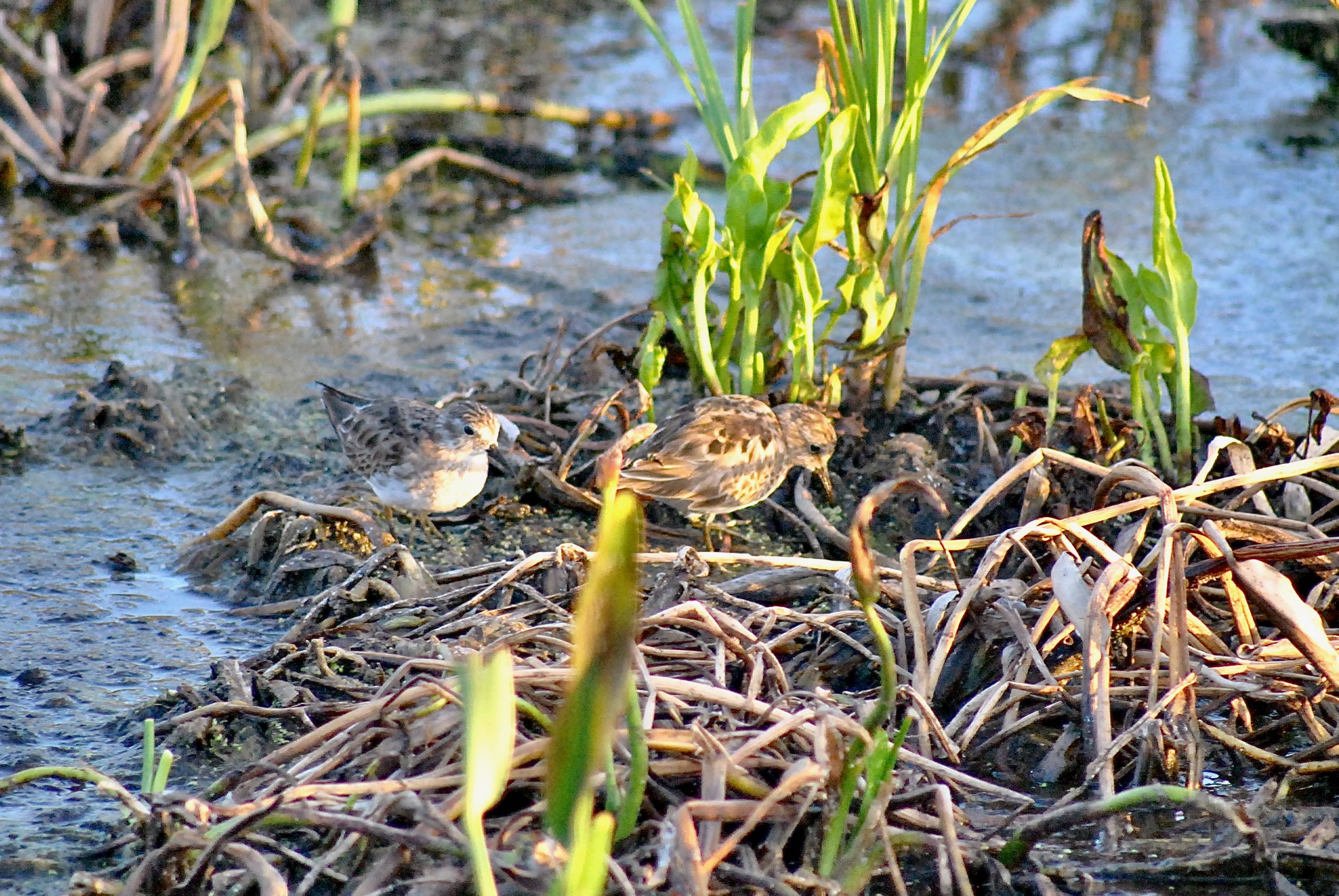
Least sandpipers, photographed at Green Cay Nature Center, Boynton Beach, Palm Beach County, in April 2013.
The name says it all. The least sandpiper, Calidris minuteilla, is the smallest of all sandpipers. In fact, it ranks as the smallest shorebird of any kind in the world, according to the Cornell Laboratory of Ornithology.
It is tiny. Least sandpipers have a body lenth of less than six inches, a wingspan of less than 12 inches and weigh an ounce or less.
On the other hand, it is one of the great travelers of the world. It spends its summers in northern Canada and Alaska, then migrates as far south as Brazil to escape the cold. The southern United States, including Florida, are also among the least sandpiper's wintering grounds.
But this is one sandpiper you're not likely to see at the beach. Instead, it prefers mudflats, wetlands and the edges of ponds, lakes and rivers well inland.
It looks similar to two other sandpipers, the western and the semipalmated. Those two are slightly bigger than the least, but the real tell is the least's yellow legs, assuming they're not covered in mud (best seen in the photo at the bottom right). The other two have black legs. One other sandpiper "peep" has the yellow legs, the pectoral, but it's larger than the least and has a dark crest on its chest.
We've seen them at Green Cay Nature Center, usually in the spring when water levels are down, creating mudflats like those in the photographs on this page. Individually, they're difficult to spot because of their size and coloring, but they're usually in small groups scurrying around. When you spot one, soon enough more come into focus. They tend to blend well with their surroundings.
Least sandpipers forage on the ground, sometimes probing into it, for a variety of delights, including insects, crustaceans, snails and worms. In summer, their diet shifts to more terrestrial creatures, including the maggots of various flies. Yum.
As noted above, least sandpipers breed in the Arctic and Subarctic Canada and Alaska. The male begins nest building by scooping out several shallow impressions in the ground, with the female selecting the final site, which she'll line with bits of vegetation. She'll lay three or four eggs, with both parents splitting incubation duties. The chicks are able to leave the nest soon after they're born and begin feeding on their own. Both parents care for their offspring, but the female usually splits southward early, leaving the remainder of the rearing to the male. Within about two weeks, the chicks will be capable of flying.
Least sandpipers are members of Scolopacidae, the sandpiper family.
Green Cay Nature Center



